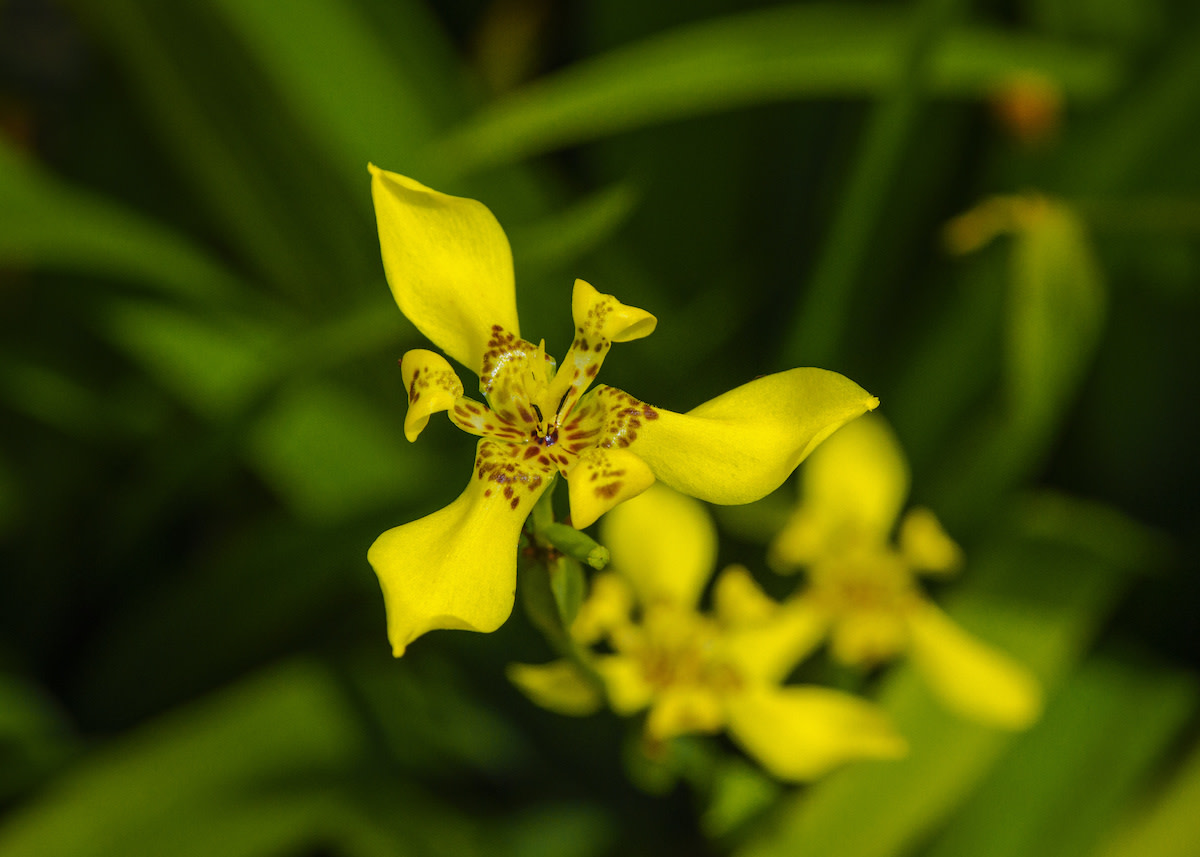Walking Iris Care Guide: How to Grow Walking Iris Flowers
Written by MasterClass
Last updated: Oct 21, 2021 • 4 min read
With striking inner flowers, walking iris plants have elements of an orchid and iris, making them an exotic addition to any garden or hanging basket. Learn how to grow and care for the clumping plant.
Learn From the Best
What Is Walking Iris?
Walking iris (Neomarica gracilis), also known as the poor man’s orchid, is a herbaceous flowering plant native to Brazil. The plant has three inner petals that grow upward and three horizontal petals that bloom outward against sharp, green leaves with a sword-like shape. There are different varieties of walking iris, all of which bloom yellow, blue, or white flowers. For example, Neomarica longifolia blooms yellow flowers, while Neomarica gracilis blooms white flowers.
While the fragrant flowers only bloom daily, the plant propagates—breeds new plants from its mother plant—generating continuous growth from spring to fall. Its common name, walking iris, stems from the plant’s unique propagation process: As new sprouts form at the top of the flower stalk, the plant bends toward the ground and takes root. It repeats this process for each new bloom, appearing to “walk” throughout gardens and outdoor landscapes.
Where to Plant Walking Iris
As a warm-climate plant, walking iris flowers grow best in USDA Hardiness Zones 10 and 11. However, with proper winter care, it can also grow in colder planting zones. Consider planting your walking iris in a container with a potting mix if you live in an area with a cold winter, so you can easily bring it inside and care for it as a houseplant.
For outdoor planting, find a site that receives indirect light, as the walking iris prefers full to partial shade. When selecting a planting site, also consider soil moisture. Walking iris flowers grow best in moist environments, so it’s important to find a spot with well-draining soil.
How to Plant Walking Iris
Walking irises propagate independently, but the mother plant needs enough room to grow and set new roots. Here’s how to plant walking iris flowers:
- Choose a planting area: Walking iris grows best in moist soil with good drainage and light sun conditions, so select a spot with partial or full shade. Also, select an uncrowded space, not too close to other garden plants, because the walking iris needs enough room to take root in the soil as it propagates.
- Prepare the soil: Walking iris grows in slightly acidic clay or sandy soil in its natural environment. Adding some garden fertilizer to your soil will lower the pH level and mimic this environment. When the soil is ready, loosen it with a garden rake or your hands. Learn three different ways to test soil pH.
- Plant the seeds or rhizomes: If you’re planting walking iris from seed or rhizomes, place them into the ground at a depth of two inches, spacing them two feet apart so the flowers have ample room to propagate.
- Divide the plant: If you want to divide the walking iris that is already in your garden, the best time to do so is in early spring so that new plantlets can grow and propagate during the bloom season. Dig up the rhizomes using a garden shovel or your hands, and carefully lift the plant and its entire root system out of the ground. Lower the plant into the new planting site, covering the roots with soil and mulch to lock in moisture.
- Water regularly: Walking iris is not a drought-tolerant plant, so be sure to give it a generous amount of water during hotter months.
4 Care Tips for Walking Iris
Walking iris grows up to three feet in height and spreads two feet wide with the right plant care. While the plant requires little maintenance, it’s important to provide partial sun, ample water, and nutrients during its growing period. Here are a few other tips:
- 1. Guide the plantlets: As new plants grow at the flower stems and develop aerial roots, help the plant take root in the soil by gently guiding the plantlets to the ground with your hand. Once the plantlet takes root in the soil, you can cut it from the mother plant to grow independently.
- 2. Monitor for pests: Walking iris flowers are resistant to most pests and diseases, though snails, slugs, and caterpillars sometimes feast on its leaves. Add neem oil or soap and water to the leaves to prevent these pests from eating your plant’s leaves.
- 3. Watering: During the growing season, water your walking iris plant regularly to maintain soil moisture. When the plant goes dormant during the winter months, limit watering to once a month.
- 4. Pruning: Remove dead flower heads to encourage propagation. You can also trim the stems at the end of the growing period in early fall to maintain healthy growth. Learn how to prune plants.
Learn More
Grow your own garden with Ron Finley, the self-described "Gangster Gardener." Get the MasterClass Annual Membership and learn how to cultivate fresh herbs and vegetables, keep your house plants alive, and use compost to make your community—and the world—a better place.
